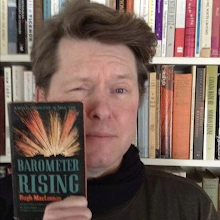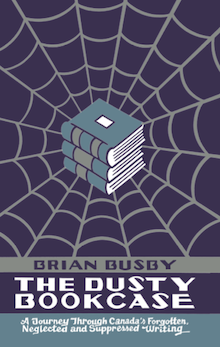Jimmie Dale and the Phantom Clue
Frank L. Packard
Toronto: Copp, Clark, 1922
This third Gray Seal book begins where the second,
The Further Adventures of Jimmie Dale, leaves off. Gentleman Jimmie and lady Marie LaSalle are entwined, adrift in a small boat on the East River. Wizard Marre is dead... and with him the last remnant of the Crime Club that had once threatened their lives. Eventually, Marie breaks the embrace and begins to row. Jimmie looks on, "drinking in
the lithe, graceful swing of her body, the rhythmic stroke
of the heavy oars." All is calm and the pace is slow, despite Marie's exertion, until they reach Manhattan.
Marie acts quickly. Gaining
terra firma, she flings the oars in the water, then pushes the boat –
and Jimmie – back into the river.
"Jimmie! Oh, Jimmie!" Her voice reached him in a
low, broken sob. "There was no other way. It's in your
pocket, Jimmie. I put it there when – when you were – were holding me."
Jimmie watches as Marie disappears into the crowded street, and I nearly threw the book against the wall.
The pattern repeats.
Jimmie Dale and the Phantom Clue begins in
much the same way as
The Further Adventures of Jimmie Dale. Our hero has vanquished the villains of the previous volume only to learn that another threatens Marie. Fearful that the link between she and he will expose the millionaire clubman's secret identity as the Gray Seal, Marie disappears to take on her new foe. The difference this time is that she expects to call on Jimmie's help every once in a while, as detailed in a letter she had left in his pocket.
There follows a new set of Gray Seal adventures; some work toward the defeating Marie's new nemesis, a mysterious figure she calls the Phantom, while others don't. The plots are clever and the writing is on par, but it's all a bit too familiar... and familiarity breeds contempt. I grew tired of reading details of Jimmie's costume changes and elderly
butler Jason's pride at having "dandled" the infant Jimmie on his knee. We're told three times that the underworld's slogan is "Death to the Gray Seal!" (down from four in
The Adventures of Jimmie Dale and eight in the
The Further Adventures of Jimmie Dale). Because the adventures were first published apart in pulp magazines, one might expect a certain amount of repetition and reminding, but the absence of an editor's red pen here just adds to the stagnant nature of the book.
I like to think that
Jimmie Dale and the Blue Envelope Murder, the next Gray Seal volume, opens with the two crimefighters together, perhaps married with children, but I really don't care enough to investigate.
At the end, I cast my mind back to the beginning, and wondered why Jimmie hadn't simply swum to shore.
Object: A 301-page novel in bland blue cloth with damaged dust jacket. The cover illustration is by A.D. Rahn. I purchased my copy in 2012 at London's
Attic Books. Price: $15.00.
I have a second copy, one of
the ten Gray Seal Edition Packards I bought two years ago. Price: US$25.00 (
for the ten).
Access: First published in 1922 by Copp, Clark (Canada) and Doran (United States). The following year, Hodder & Stoughton put out the first UK edition. As far as I can tell, the novel was last published in 1942 by Novel Selections as
Jimmy Dale and the Phantom Clue.
The novel is held by nineteen of our universities, but not one library serving the public. Library and Archives fails, as does the more reliable Toronto Public Library.
Twenty-two copies of one edition or another is listed by online booksellers, ranging in price from US$4.50 (a cheap A.L. Burt reprint) to US$100 (the Copp, Clark Canadian first, "near fine in very good dj"). My advice is to try Attic Books.
Related posts:



